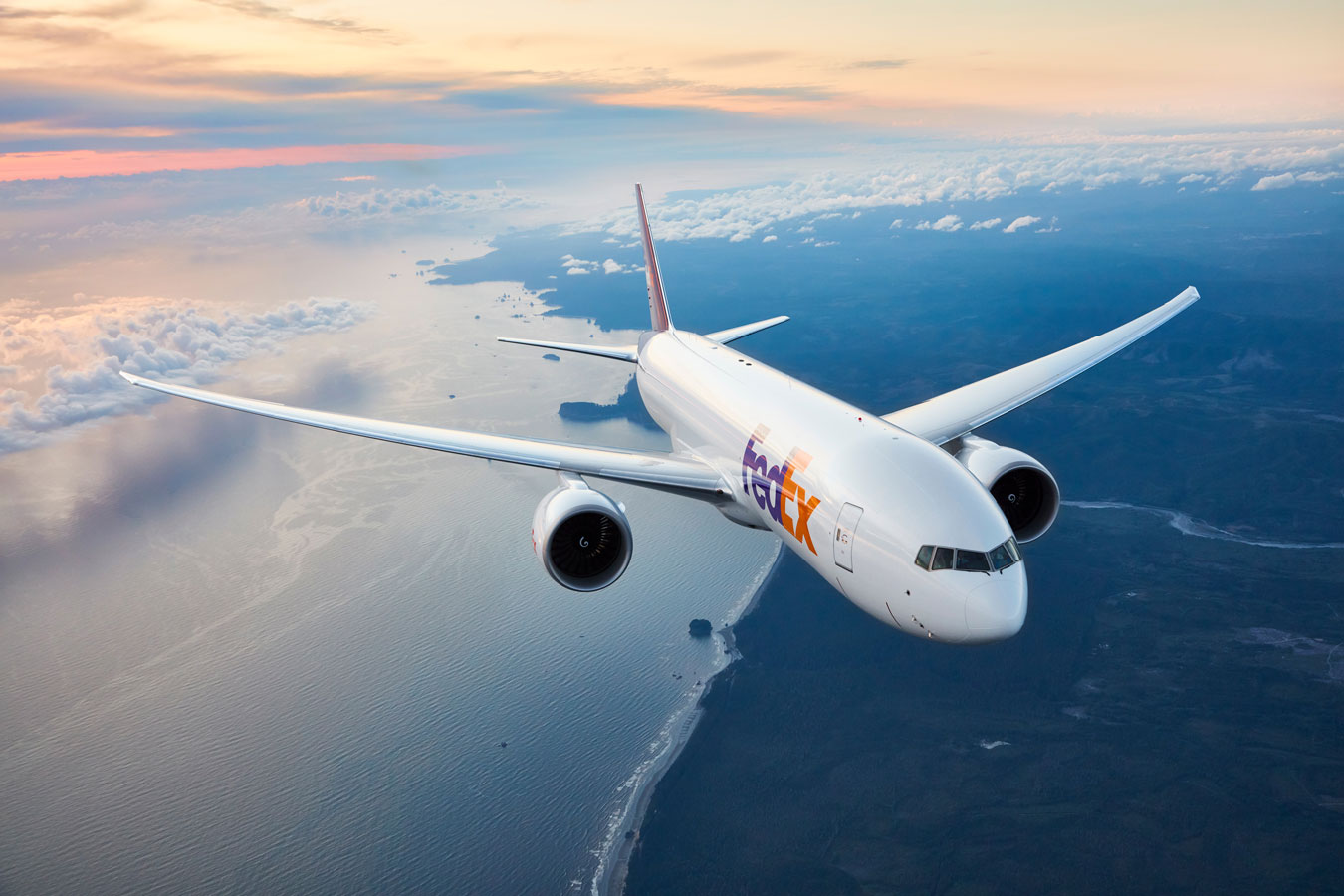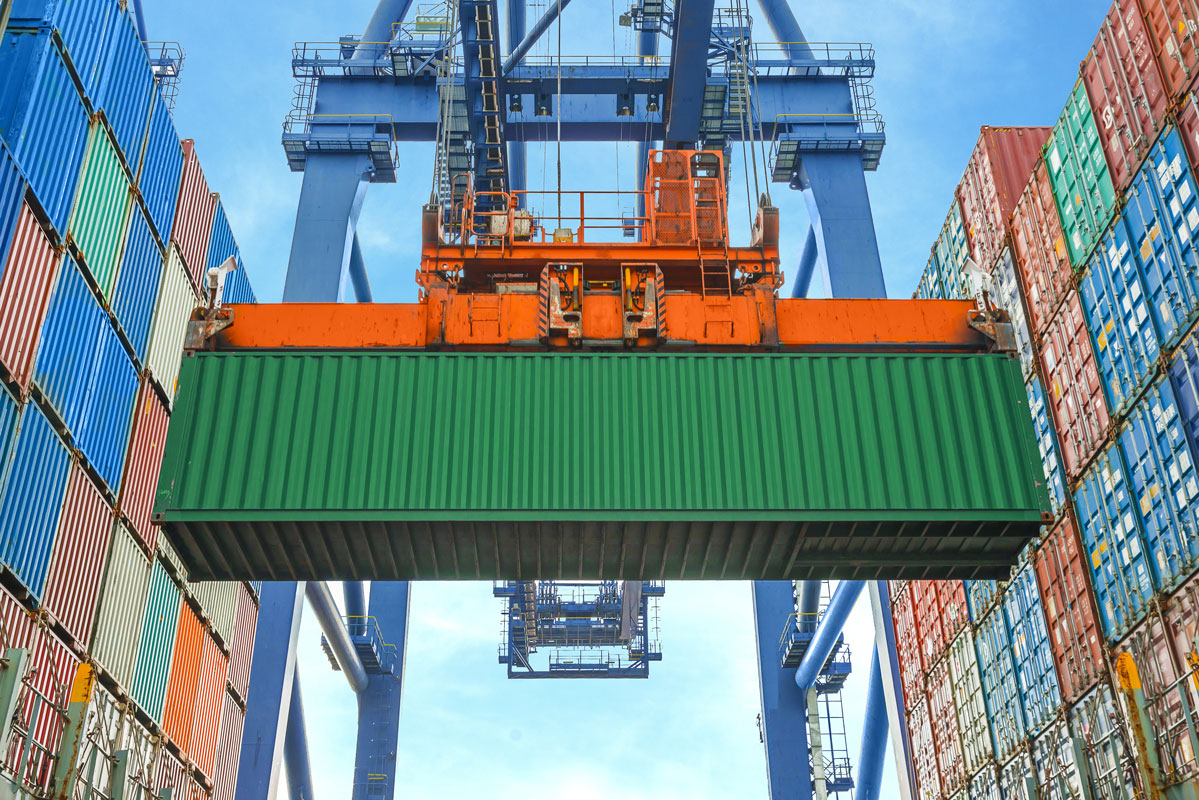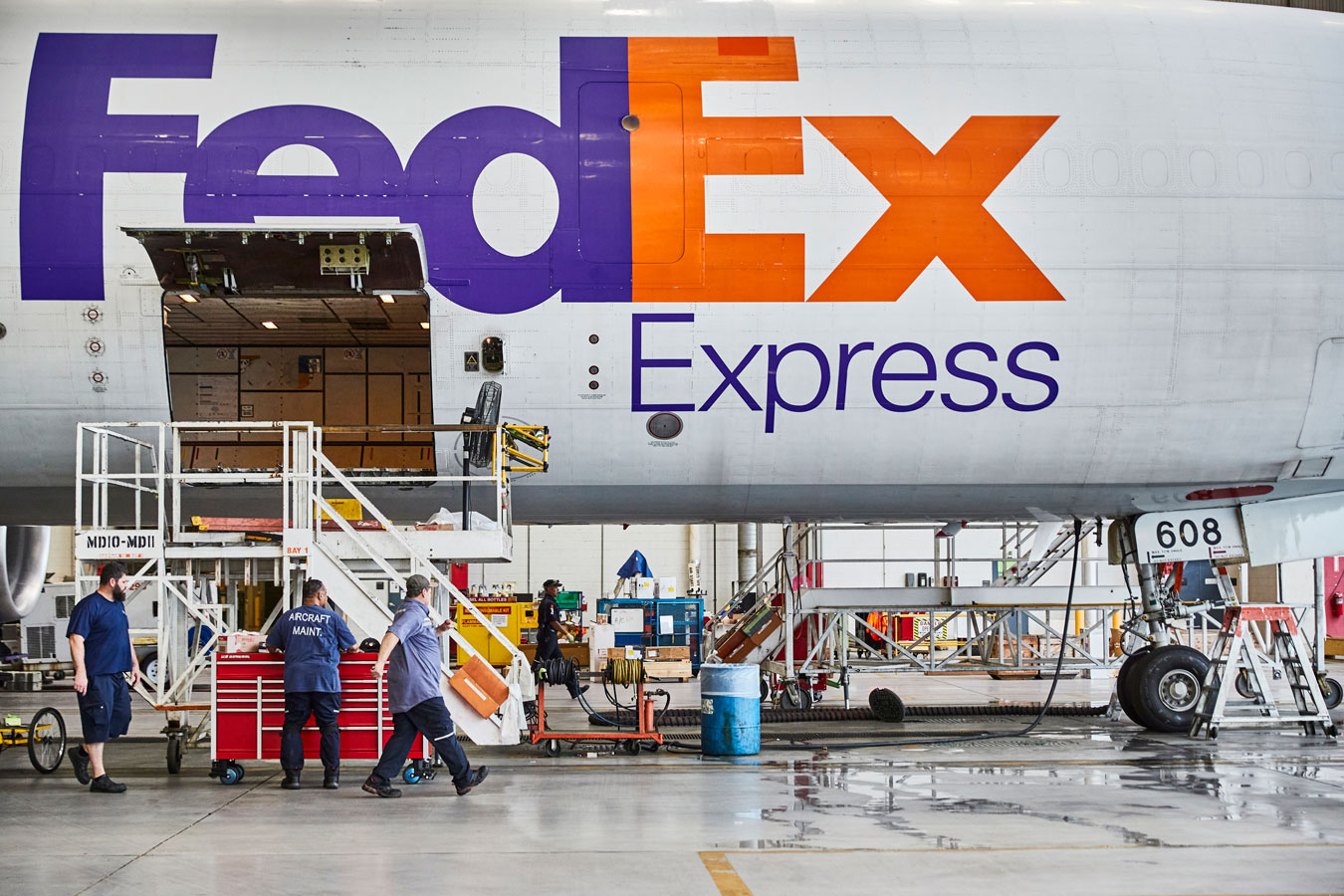What’s Moving The Cargo Aviation Industry In 2024?
Air cargo demand is on the rise. Asia Pacific contains some of the world’s biggest trade lanes, with the e-commerce boom stoking demand. As the global aviation community aims to become more sustainable, it’s all eyes on the skies as we explore the latest innovations for a net-zero future.
- Global air cargo demand has seen strong growth in 2024, particularly in Asia Pacific.
- The e-commerce industry continues to boost air freight demand, despite global geopolitical disruption.
- FedEx APAC president Kawal Preet explores whether growth trends are set to continue, and the factors contributing to demand spikes in 2024.
The demand for air cargo is growing, and Asia Pacific is leading the charge.
The latest IATA data for 2024 shows six consecutive months of double-digit growth year-on-year (YoY) across the globe. And in Asia, the upward trend is even more pronounced, with a 17.8% YoY growth for air cargo in Asia Pacific.
Major Asia trade lanes continue to be dynamic. Demand on the Africa-Asia trade lane grew by 40.6%. Europe-Asia, Intra-Asia and Middle East-Asia trade lanes rose by 20.4%, 19.2% and 18.6% respectively. Capacity increased by 8.4% YoY. A pattern of brisk momentum is emerging here, and behind it all is commercial growth.
The latest IATA data for 2024 shows six consecutive months of double-digit growth year-on-year (YoY) across the globe. And in Asia, the upward trend is even more pronounced, with a 17.8% YoY growth for air cargo in Asia Pacific.
Major Asia trade lanes continue to be dynamic. Demand on the Africa-Asia trade lane grew by 40.6%. Europe-Asia, Intra-Asia and Middle East-Asia trade lanes rose by 20.4%, 19.2% and 18.6% respectively. Capacity increased by 8.4% YoY. A pattern of brisk momentum is emerging here, and behind it all is commercial growth.

What these figures tell us is that the air cargo industry continues to be highly resilient in the face of geopolitical and economic uncertainties. But what’s driving this demand? Are any headwinds predicted that might stall further growth in the year ahead? I unpack four of the biggest air cargo trends in 2024:
Trend 1: E-commerce is still moving the needle – constantly
A significant factor in air cargo demand is the flourishing e-commerce sector. Asia Pacific has a 33.3% share of the global air cargo market, the highest of any region worldwide. Many of the world’s biggest e-commerce import/export markets, including China, are in this region.
The current operating environment for air cargo remains positive. IATA figures also show that the Purchasing Managers Index (PMIs) for global manufacturing output and new export orders reported growth. Industrial production and global cross-border trade have also increased in 2024.
Underpinning all of this is the continued enhancement of the e-commerce universe, with businesses and brands finding new ways to encourage and service online shopping – and new players entering the market all the time.
The current operating environment for air cargo remains positive. IATA figures also show that the Purchasing Managers Index (PMIs) for global manufacturing output and new export orders reported growth. Industrial production and global cross-border trade have also increased in 2024.
Underpinning all of this is the continued enhancement of the e-commerce universe, with businesses and brands finding new ways to encourage and service online shopping – and new players entering the market all the time.

In 2023, four of the top ten busiest air cargo hubs in the world were in Asian airports: Hong Kong, Shanghai, Incheon and Taipei. FedEx operates major transportation hubs inside each of those airports, so we see firsthand how dynamic and fast-moving operations are.
We can track volume and demand in near real time, making it easier to understand geographic trends, customer needs, and manage supply chain bottlenecks or compression points.
Of course, as commerce moves quickly, so do we. For example, a key trend we identified last year was the rise of Southeast Asia, in particular Vietnam, as a new global manufacturing powerhouse.
As businesses shifted supply and sourcing here, we recognized that our transportation network in the region needed to facilitate the extra demand. We added new flights out of Ho Chi Minh City to better support businesses with quicker transit times from Southeast Asia to the world.
We can track volume and demand in near real time, making it easier to understand geographic trends, customer needs, and manage supply chain bottlenecks or compression points.
Of course, as commerce moves quickly, so do we. For example, a key trend we identified last year was the rise of Southeast Asia, in particular Vietnam, as a new global manufacturing powerhouse.
As businesses shifted supply and sourcing here, we recognized that our transportation network in the region needed to facilitate the extra demand. We added new flights out of Ho Chi Minh City to better support businesses with quicker transit times from Southeast Asia to the world.
Headwinds for this trend: The evolving regulatory landscape for e-commerce shipments between Asia and the US may introduce complexities. Adjustments in import regulations could potentially impact shipping costs and timelines.
Tailwinds for this trend: E-commerce sales in APAC are set to hit $3.2 trillion by 2028, thanks to growth across some of Asia’s mega markets – with recent strong performance buoyed by the rise in digital wallet and e-payment adoption.

Trend 2: Air cargo will continue to benefit from constraints on maritime shipping
Recent aviation summits have seen dialogues focused on the push-pull of air versus sea cargo. Capacity crunches on the water in recent months have led to major trade disruption. And most recently, what many are describing as a ‘perfect storm’ is set to hit the sea freight industry. As peak shipping season began, the ongoing fall-out from the Red Sea shipping disruptions was further exacerbated by spates of bad weather in Asia.
The pressure placed on maritime cargo as a result has led to supply chain bottlenecks and a total removal of excess capacity in the market. Of course, this always has a major knock-on effect on shipping prices.
The pressure placed on maritime cargo as a result has led to supply chain bottlenecks and a total removal of excess capacity in the market. Of course, this always has a major knock-on effect on shipping prices.

The upshot is typically that the air cargo industry picks up some of the slack, with increased demand on air freight as businesses shuffle their supply chains to accommodate delays or the temporary inaccessibility of sea freight. With the squeeze on ocean cargo set to continue, we can expect that air cargo demand will also stay strong.
Headwinds for this trend: Disruptions to global trade and supply chains are always a risk – the air cargo industry is not exempt from some of the issues faced by carriers shipping by water.
Tailwinds for this trend: Peak shipping and back-to-school season mean that demand will remain high for now.
Tailwinds for this trend: Peak shipping and back-to-school season mean that demand will remain high for now.
Trend 3: The laser focus on fast-growing segments is set to continue
The aviation industry, including airport operations, has a continued responsibility to ensure it can accommodate the specific needs of cargo shipments. To capture future growth, it’s essential to focus on the highest-value, fastest-growing segments – and the sector needs to stay light on its feet to press advantages.
This can mean anything from runway expansions and infrastructure upgrades to ensuring aviation hubs have the tools and expertise to process special shipments.
For example, Hong Kong, one of the busiest cargo airports in the world, was the first airport to attain every Center of Excellence for Independent Validators (CEIV) certification from IATA. This covers the handling of high-value goods, including pharmaceuticals, perishables, live animals and lithium batteries.
This can mean anything from runway expansions and infrastructure upgrades to ensuring aviation hubs have the tools and expertise to process special shipments.
For example, Hong Kong, one of the busiest cargo airports in the world, was the first airport to attain every Center of Excellence for Independent Validators (CEIV) certification from IATA. This covers the handling of high-value goods, including pharmaceuticals, perishables, live animals and lithium batteries.

The surge in both the lithium battery and semi-conductor industry means that more and more air cargo hubs will need to upgrade handling and processing facilities, ensuring safe transit of these materials.
And as Asia’s pharmaceutical industry continues to go from strength to strength, we will see continued facilitation of the rise in cold-chain and biopharma shipments, which have precise, highly specialized storage and transportation requirements.
And as Asia’s pharmaceutical industry continues to go from strength to strength, we will see continued facilitation of the rise in cold-chain and biopharma shipments, which have precise, highly specialized storage and transportation requirements.
Headwinds for this trend: A lack of agility. One key challenge is that some air cargo hubs will not be able to transform or scale up specialized services fast enough to meet demand.
Tailwinds for this trend: The lithium battery value chain is set to continue its mega-growth, while China, India and other Asian markets are expanding investment into semi-conductor production.
Tailwinds for this trend: The lithium battery value chain is set to continue its mega-growth, while China, India and other Asian markets are expanding investment into semi-conductor production.
Trend 4: The race to make air cargo more sustainable is going to speed up
More planes in the sky shipping cargo means that global emissions need to be controlled. As demand rises, businesses must support efforts to uplift the aviation sector and forge a stronger future. The global aviation community is committed to achieving net zero emissions by 2050, and it sees greener aviation fuel as crucial to achieving this target.
However, many have pointed out the long and difficult road ahead. One major roadblock is the shortage - or inability to produce at speed and scale – of sustainable aviation fuel. To combat this, commercial and cargo airlines are signing major partnership agreements with other aviation players to pool resources and jumpstart progress.
However, many have pointed out the long and difficult road ahead. One major roadblock is the shortage - or inability to produce at speed and scale – of sustainable aviation fuel. To combat this, commercial and cargo airlines are signing major partnership agreements with other aviation players to pool resources and jumpstart progress.

With the need for decarbonization only becoming more urgent as both passenger and cargo planes get busier, we’re going to see an uptick in activity from the aviation industry. More pressure from environmental campaigners and eco-conscious consumers will also help to drive change.
At FedEx, we’re continuing to build on our FedEx® Fuel Sense initiatives to reduce aircraft fuel consumption. Other efforts to decarbonize and meet our 2040 carbon-neutral goal include electrification of our ground fleet, plus research into methods for natural carbon capture.
At FedEx, we’re continuing to build on our FedEx® Fuel Sense initiatives to reduce aircraft fuel consumption. Other efforts to decarbonize and meet our 2040 carbon-neutral goal include electrification of our ground fleet, plus research into methods for natural carbon capture.
Headwinds for this trend: Many believe the aviation industry is still too fragmented to band together for change, with huge variation in the policies and approaches of individual governments.
Tailwinds for this trend: IATA has unveiled a series of roadmaps with step-by-step critical actions for aviation to achieve net zero carbon emissions by 2050. A critical reference point for policymakers, they can help provide the ammunition that authorities need to make laws and regulations to tackle climate change in aviation.
Tailwinds for this trend: IATA has unveiled a series of roadmaps with step-by-step critical actions for aviation to achieve net zero carbon emissions by 2050. A critical reference point for policymakers, they can help provide the ammunition that authorities need to make laws and regulations to tackle climate change in aviation.
It's clear that our collective efforts are crucial in shaping a more sustainable aviation landscape for generations to come. Innovation will be at the center of this. Researching and adopting innovations in sustainability measures means advancing technology for a greener and more efficient future.
As businesses tap these trends while navigating an uncertain macroeconomic environment, agility and preparedness across a range of scenarios will be key. At FedEx, we believe that strong partnerships are also key to fostering innovation, transformation and growth. We work closely with governments, airports and aviation authorities to ensure we can maintain vibrant, thriving aviation hubs that enhance global connectivity and boost regional trade.
As businesses tap these trends while navigating an uncertain macroeconomic environment, agility and preparedness across a range of scenarios will be key. At FedEx, we believe that strong partnerships are also key to fostering innovation, transformation and growth. We work closely with governments, airports and aviation authorities to ensure we can maintain vibrant, thriving aviation hubs that enhance global connectivity and boost regional trade.
***




















 The Latest
The Latest